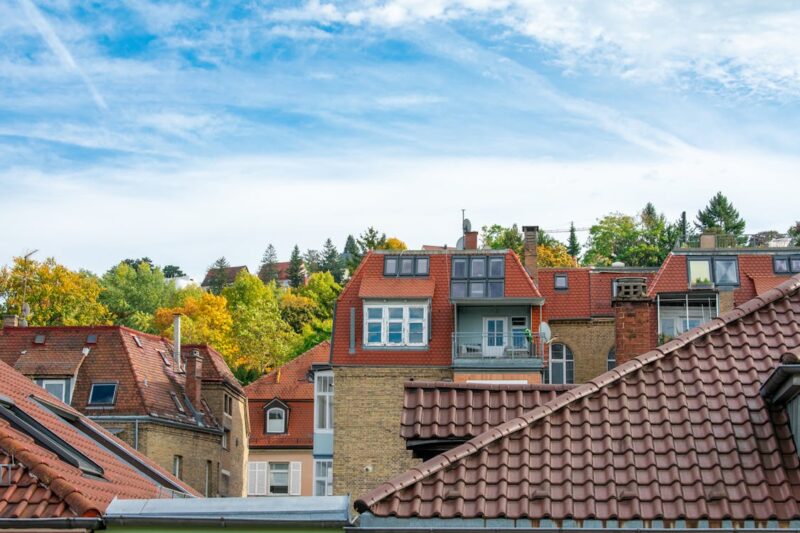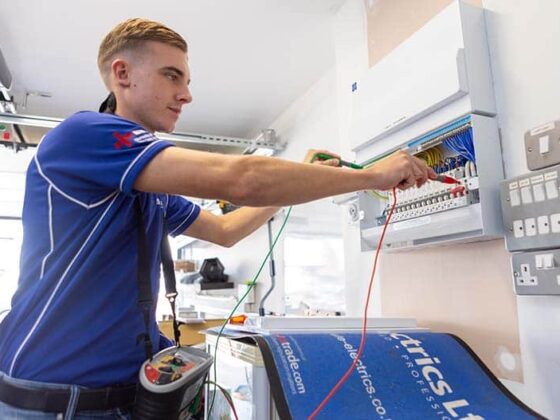The UK’s housing market has long been characterized by a chronic shortage of affordable homes, especially for first-time buyers. This issue is particularly acute in areas like London, the South East, and major cities such as Manchester and Birmingham, where high demand, coupled with limited supply, has driven property prices to unattainable levels for many aspiring homeowners. It has recently been suggested that to tackle this growing crisis, innovative building techniques that are now emerging could be useful in not only speed up construction times. But also reducing costs, offering a glimmer of hope for more affordable housing solutions.
1. Modular Construction: Efficiency Through Prefabrication
One of the most promising modern techniques in home building is modular construction. This method involves manufacturing sections of a home in a factory setting before transporting them to the construction site for assembly.
Certain elements of a house, such as timber roof trusses and floor joists, have long been fabricated offsite and then transported to the building site ready to be installed as part of the building process. However, newer techniques see many more prefabricated sections of a house arrive at site ready to be incorporated into the build. The benefits of modular construction such as this are manifold:
- Speed: Homes can be built 30-50% faster than traditional methods because the bulk of the work is done off-site, in parallel with site preparation.
- Quality Control: Factory settings allow for more stringent quality control, leading to better-built homes.
- Cost Efficiency: Bulk production of modules can reduce costs, making homes more affordable.
Modular construction has already seen success in places like London, where companies like Legal & General have invested heavily in modular housing factories. This method is particularly effective in urban areas where space is limited, and speed is essential to meet the high demand.
2. 3D Printing: The Future of Affordable Homes
Another groundbreaking technique that holds great potential for the UK housing market is 3D printing. While still in its infancy in the construction industry, 3D printing has already demonstrated its ability to revolutionize how homes are built:
Rapid Construction: Entire homes can be printed in a matter of days, significantly reducing construction timelines.
Material Efficiency: 3D printing minimizes waste by using only the materials necessary, leading to cost savings.
Design Flexibility: The technology allows for innovative and efficient designs that traditional methods might struggle to achieve.
In the UK, 3D printing could play a crucial role in areas like Manchester and Birmingham, where the demand for affordable homes is soaring. By drastically cutting down on construction times and costs, 3D-printed homes could offer a viable solution for first-time buyers who are currently priced out of the market.
3. Sustainable Building Materials: Cost Savings and Environmental Benefits
As the construction industry becomes increasingly focused on sustainability, the use of alternative building materials is gaining traction. Materials like cross-laminated timber (CLT) and recycled steel not only have a lower environmental impact but also offer cost savings:
Cross-Laminated Timber (CLT): This material is strong, lightweight, and can be prefabricated, reducing construction times. CLT is also renewable, making it an environmentally friendly option.
Recycled Steel: Using recycled steel reduces the need for new material production, lowering costs. It is also durable and can be used in modular construction.
These materials are especially relevant in regions like the South East, where the demand for affordable, sustainable housing is high. Incorporating such materials into modern building practices can help bring down costs while also meeting the growing demand for eco-friendly homes.
4. Digital Construction and BIM: Streamlining the Building Process
Building Information Modeling (BIM) is a digital tool that helps manage the construction process more efficiently. BIM allows for the creation of detailed 3D models of a building before construction begins, offering several advantages:
- Collaboration: BIM fosters better communication among architects, engineers, and builders, reducing errors and delays.
- Cost Estimation: Accurate modeling helps in predicting costs more reliably, preventing budget overruns.
- Project Management: BIM streamlines project management, ensuring that construction stays on schedule.
In cities like London and Bristol, where the housing market is competitive and land is scarce, BIM can help developers maximize the efficiency of their projects, speeding up the delivery of affordable homes.
Conclusion
The UK’s need for affordable housing is urgent, especially in high-demand areas like London, the South East, Manchester, and Birmingham. By embracing modern building techniques such as modular construction, 3D printing, sustainable materials, and digital tools like BIM, the construction industry can significantly speed up the delivery of new homes. These innovations not only reduce costs but also improve the quality and sustainability of housing, offering a practical solution to the affordable housing crisis. For first-time buyers struggling to get on the property ladder, these advances represent a much-needed opportunity to finally achieve homeownership.


